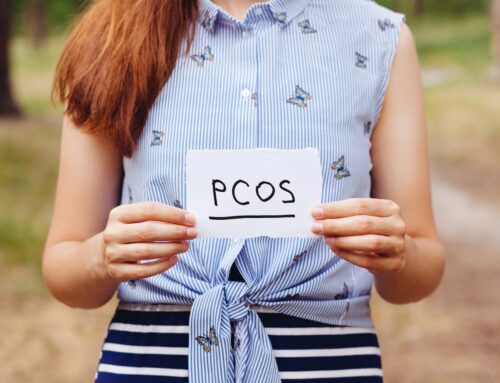IUI vs. IVF: What’s the difference?
December 4, 2024
At Chosen Egg Bank, we have a wealth of experience helping intended parents start their families. No matter your situation, the treatment path you choose, or the struggles you’ve faced, we’re here to help you make your dreams possible through egg donation. If you’re struggling with infertility, or simply need assistance in growing your family, we understand exactly what you are going through – in fact, many of us have faced similar struggles, or helped families who have through our own egg donation!
So, to help you discover the many wonderful options available to you to start a family, we’ve created this easy guide, diving into the common first steps that intended parents often take when beginning their fertility journey, to give nature a nudge to help them start a family! To get you started, we’ve broken down the difference between two common treatments: intrauterine insemination (IUI) and in-vitro fertilization (IVF), to offer you clarity about the difference between IUI and IVF, the processes, success rates, cost differences, and when to consider egg donation…
First steps
If you are concerned about your ability to conceive, the very first step is to work with a fertility specialist to consider the cause of the struggles you are facing with conception, be it age, abnormal sperm, a health condition, or something else entirely. If necessary, your doctor can conduct tests to offer you advice on the likelihood of success conceiving naturally and with each of these treatments, so you can move forward with the best treatment options or family planning methods for you!
Who is intrauterine insemination (IUI) for?
Less expensive and less invasive than IVF, many intended parents try IUI first. It can be a great option for those without a clear cause of infertility or with mild infertility concerns such as sperm abnormality, when using fertility medications is unsuccessful, or for those who otherwise have difficulty achieving pregnancy naturally. For example, it can be an ideal solution for intended parents who have another reason that makes conceiving difficult, for example living situation, work schedules, traveling, sexual dysfunction, for those who wish to use frozen or donor sperm, or for single or LGBTQ intended parents assigned female at birth.
The IUI procedure
The IUI procedure is 5-10 minutes and can be done either naturally or with stimulation from fertility medication — however, this may increase the chances of having twins or even triplets! To start, a sperm sample is collected (from a partner or donor), washed to remove seminal fluid and concentrated so that more sperm makes it to the uterus than with intercourse. At the peak time of the fertile window, a thin tube is placed into the uterus. The sperm sample is then injected directly into the uterus to give it a shorter trip and increase the chances of a successful fertilization. The rest is up to nature!
Who is in-vitro fertilization (IVF) for?
If an intended parent is unsuccessful in getting pregnant after trying for one year and has a known fertility concern — or after 3-4 unsuccessful attempts with IUI — many move forward in their journey by trying IVF — an assisted reproductive technology in which eggs are fertilized outside of the body. Some parents, such as for those who natural conception is not possible, such as LGBTQ parents assigned male at birth, try IVF first. This is a great option for those with severe male infertility (history of vasectomy, low sperm count or motility), advanced endometriosis, blocked fallopian tubes, concerns about passing on genetic conditions, those who have faced multiple miscarriages, lack of ovulation, low egg supply or poor egg vitality, or who wish to use a surrogate.
The IVF procedure
To begin the process, the intended mother or egg donor undergoes ovary stimulation with fertility medication over the course of around 10-14 days, followed by an egg retrieval procedure where a specialist uses a vaginal ultrasound to guide a needle carefully through the vaginal wall and into each follicle. The fluid that contains mature eggs is collected — a minor procedure requiring mild anesthesia that typically lasts 10 to 30 minutes. To dive deeper into the egg retrieval process, read our blog post here!
IVF embryo transfer
After the eggs are collected, they are taken to the lab to be frozen or fertilized, and then eventually transferred as an embryo to the person who intends to carry the child. Much like IUI, for this procedure, a fertility specialist inserts a thin tube through the cervix into the womb in order to deliver the embryos for implantation. This means that the biological mother can use her own eggs or donor eggs to either carry her own child or use a surrogate.
IUI vs IVF success rates
The success rate for IUI vs IVF depends on a number of factors and can vary with age. IUI is generally considered to be far less effective than IVF. IUI success rates for patients in their early 30s or younger can be up to 25%, around 10-20% in 30s – or as low as 5% by a patient’s early 40s. Multiple attempts can improve the success rate up to about 40-50% cumulatively.
IVF on the other hand, has significantly higher success rates! The Society for Assisted Reproductive Technology (SART) reports that IVF success rate is around 30% for women in the US of all ages and even higher for women under 35. Many doctors consider the IVF success rate to be around 50-75% for a single round for most patients — much more promising! Ultimately, success depends on factors such as age, fertility concern, ovarian reserve, and more. And, it is not uncommon for patients to require 2 or 3 rounds of IVF.
The cost of IUI vs IVF
While IUI is far less expensive than IVF – as little as a few hundred dollars or up to $2,000 per cycle based on your unique needs, repeat cycles can make costs add up fast. This depends on which fertility clinic you choose, the types of medications required, and the additional tests or follow-up that is needed by your fertility specialist. However, with multiple rounds, the costs of repeated IUI can add up to around half the cost of IVF and still might not produce the miracle you are hoping for.
In contrast, the average cost of IVF is about $12,000 in the US. While these numbers might seem intimidating at first, it’s very possible that your insurance covers some of these infertility testing and treatments. In addition, the best egg banks, like Chosen Egg Bank, work with financial partners to help make IVF possible for intended parents.

At Chosen Egg Bank, we are here to help you in every step of your journey to parenthood. If you think egg donation might be right for your family, please reach out to our compassionate team of experts! We are here to offer you everything you need to make your decision and have a positive egg donation experience as you embark on the most precious adventure of your life. Visit our website to learn more about what we do or visit our expansive egg donor database, to start your journey today!











